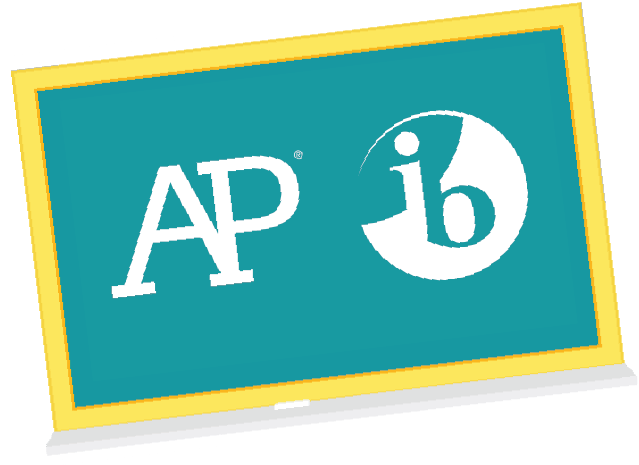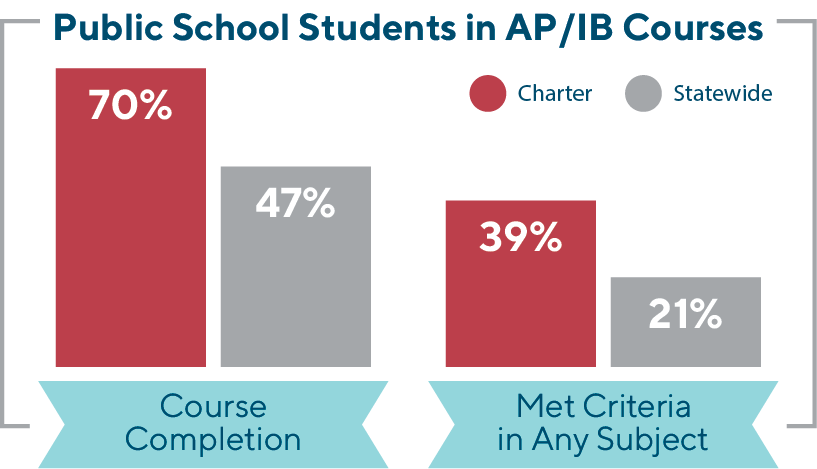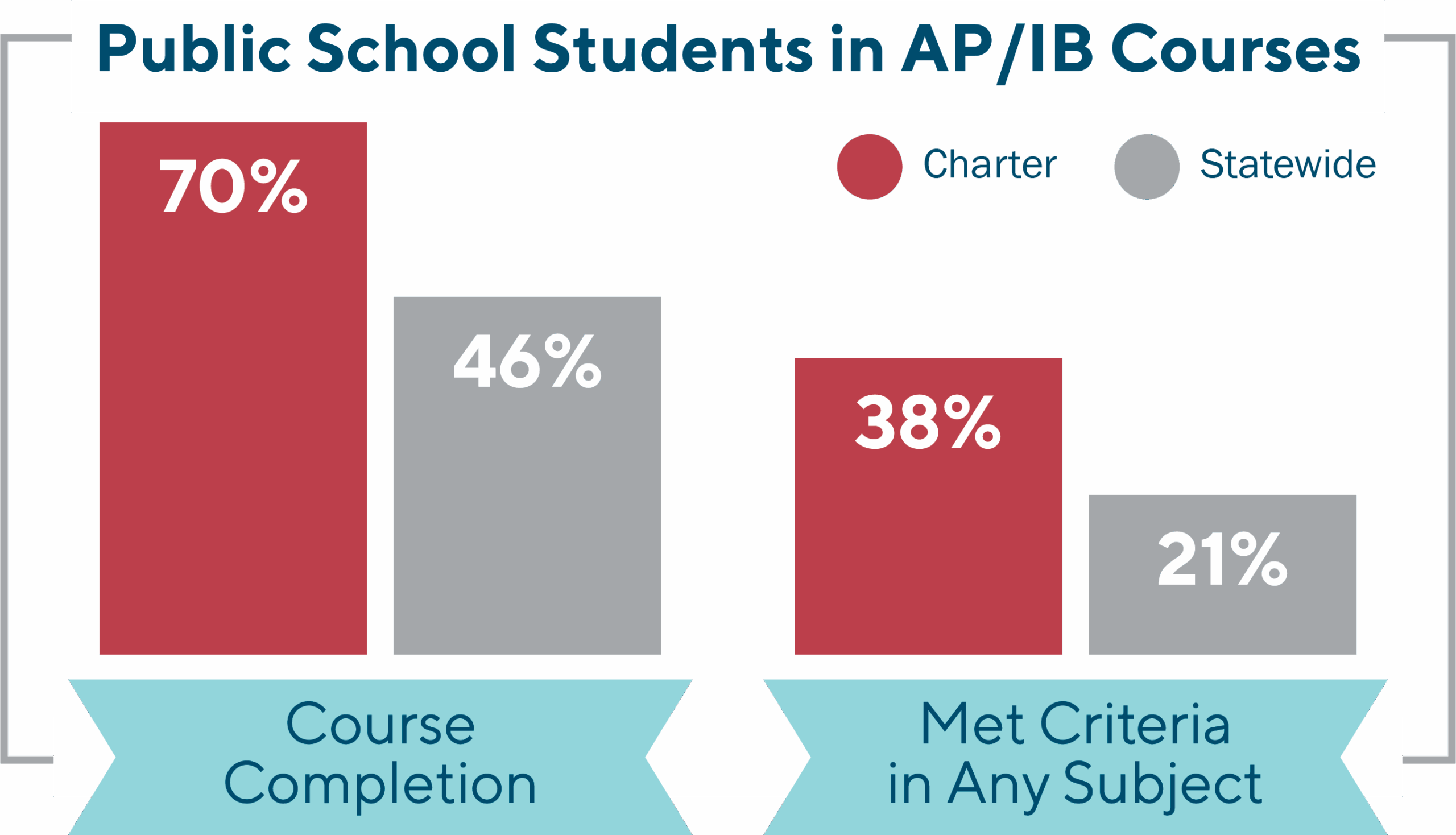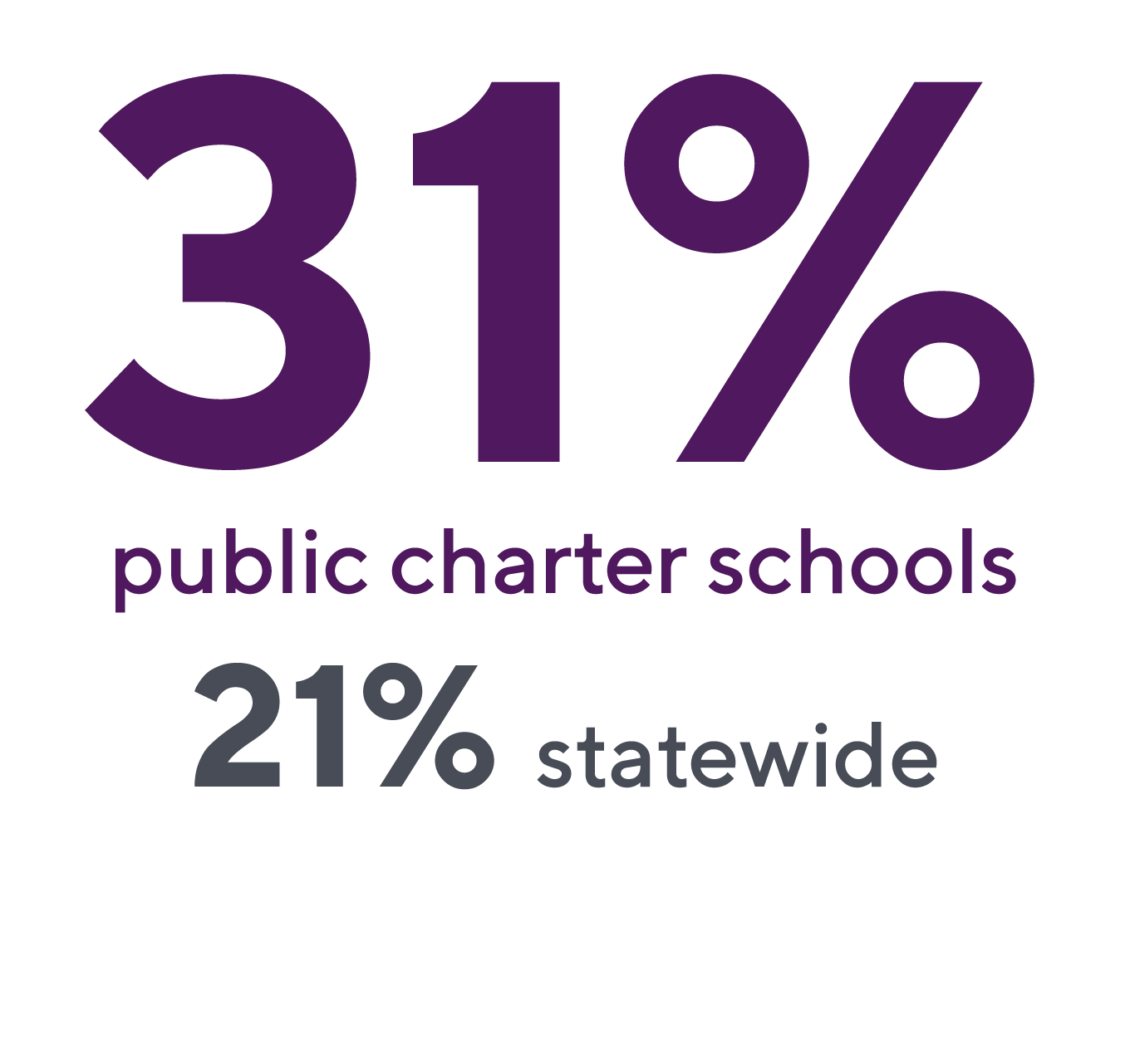At Texas public charter schools, historically underserved students meet grade level on ELA/Reading STAAR exams at rates 3 to 7 percentage points higher than their peers statewide. Low-income, Black, and Hispanic students, as well as English learners, are building the foundational reading skills they need to succeed.
At Texas public charter schools, historically underserved students meet grade level on ELA/Reading STAAR exams at rates 3 to 7 percentage points higher than their peers statewide. Low-income, Black, and Hispanic students, as well as English learners, are building the foundational reading skills they need to succeed.
At Texas public charter schools, historically underserved students meet grade level on ELA/Reading STAAR exams at rates 3 to 7 percentage points higher than their peers statewide. Low-income, Black, and Hispanic students, as well as English learners, are building the foundational reading skills they need to succeed.




At Texas public charter schools, students have more access to rigorous Advanced Placement and International Baccalaureate courses — and they're twice as likely to pass the exams. These are top predictors of success in college and beyond.


At Texas public charter schools, students have more access to rigorous Advanced Placement and International Baccalaureate courses — and they're twice as likely to pass the exams. These are top predictors of success in college and beyond.
At Texas public charter schools, students have more access to rigorous Advanced Placement and International Baccalaureate courses — and they're twice as likely to pass the exams. These are top predictors of success in college and beyond.

At Texas public charter schools, 82% of graduates are prepared for college — significantly higher than the statewide average of 64%.
For more than a decade, these graduates have consistently enrolled in higher education at much higher rates than their peers statewide. The gaps are largest for historically disadvantaged students.
At Texas public charter schools, 82% of graduates are prepared for college — significantly higher than the statewide average of 64%.
For more than a decade, these graduates have consistently enrolled in higher education at much higher rates than their peers statewide. The gaps are largest for historically disadvantaged students.
At Texas public charter schools, 71% of graduates are prepared for college — significantly higher than the statewide average of 55%.
For more than a decade, these graduates have consistently enrolled in higher education at much higher rates than their peers statewide. The gaps are largest for historically disadvantaged students.


Students at dropout recovery public charter schools are more likely to graduate with an industry-based certification or Level I or II certificate compared to their peers statewide.
Students at dropout recovery public charter schools are more likely to graduate with an industry-based certification or Level I or II certificate compared to their peers statewide.
Students at dropout recovery public charter schools are more likely to graduate with an industry-based certification or Level I or II certificate compared to their peers statewide.
ELLs and former ELLs who were enrolled at Texas public charter schools in high school earn about $2,000 more annually in their early careers, according to a 2023 study by the Thomas B. Fordham Institute.
ELLs and former ELLs who were enrolled at Texas public charter schools in high school earn about $2,000 more annually in their early careers, according to a 2023 study by the Thomas B. Fordham Institute.
ELLs and former ELLs who were enrolled at Texas public charter schools in high school earn about $2,000 more annually in their early careers, according to a 2023 study by the Thomas B. Fordham Institute.

Questions? Contact research@txcharterschools.org
Questions? Contact research@txcharterschools.org
Questions? Contact research@txcharterschools.org